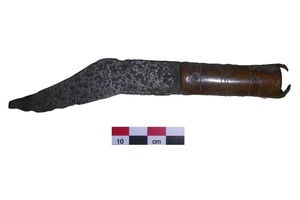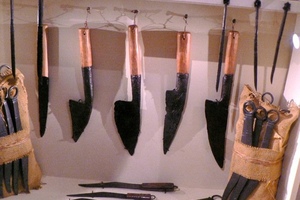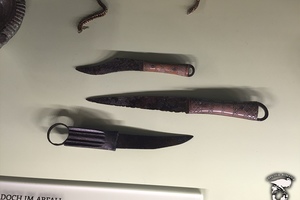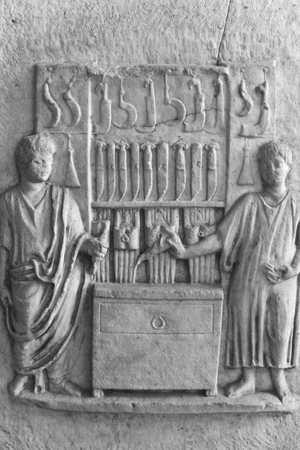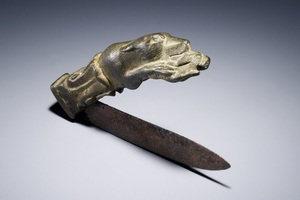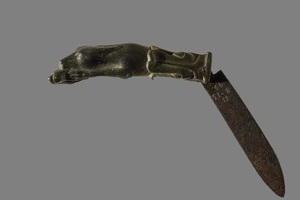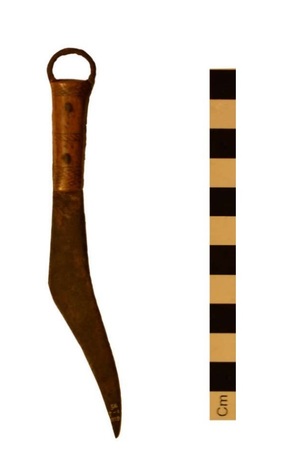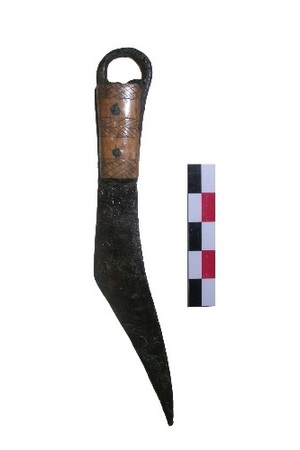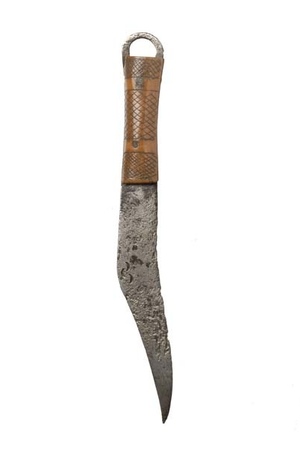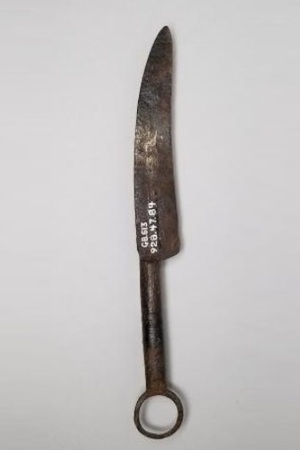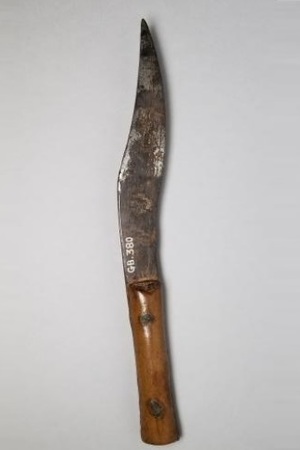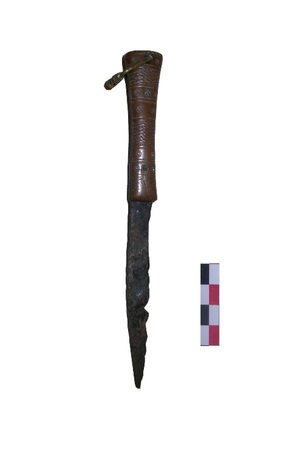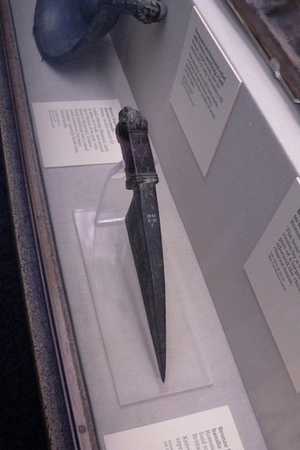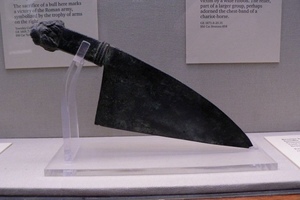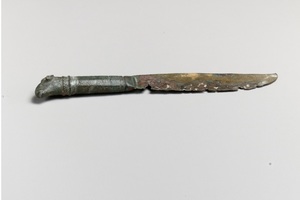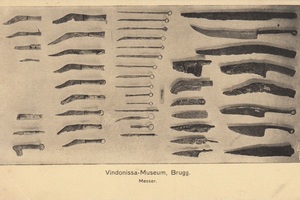Culter
Culter (Latin: culter) was a Roman type of utility knife. It was mostly made of iron, occasionally bronze. It could have a wooden, bone, or metal handle. The handle and blades could be decorated with various patterns. A loop for hanging the tool was often found on the handle. The blade shape could vary significantly in both form and size depending on its intended use.
Depending on its functionality and size, the knife could have different names, such as:
- Clunac(u)lum: a knife, dagger (used for slaughtering animals)
- Crepidarius: shoemaker's knife
- Falcastrum: sickle-shaped garden knife
- Falcula: small sickle or garden knife
- Falx, falcis: garden knife
- Novacula: sharp knife
- Scalprum: cutting tool (chisel, scalpel, garden knife, shoemaker's tool)
- Secespita: sacrificial knife
Knives were widely used by all ancient peoples. The shape, functionality, and choice of materials varied depending on the culture. For example, besides iron, bronze could also be used for making the blade. To enhance strength, the blade could have reinforcement ridges.
The largest variety of knives has been found in Roman culture. They were used by both the civilian population for domestic purposes and in legionary camps. They served ritual and medical purposes as well. There were also knives combined with other tools, such as spoons and forks. Additionally, folding knives were quite common.
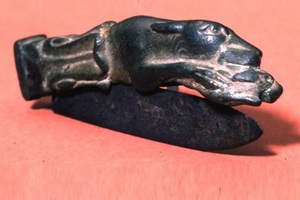 Roman folding knife. Iron blade, bronze handle. Length 13.97 cm. Found in Vaucluse, Vaison commune, France. British Museum, London. No. 1851.0813.45. 1-2 century AD
Roman folding knife. Iron blade, bronze handle. Length 13.97 cm. Found in Vaucluse, Vaison commune, France. British Museum, London. No. 1851.0813.45. 1-2 century ADRelated topics
Ancient military campaigns, Spoon, Fork, Calix, Catinum, Pugio, Gladius

 Gallery
Gallery






